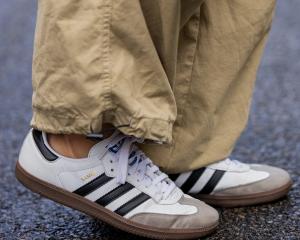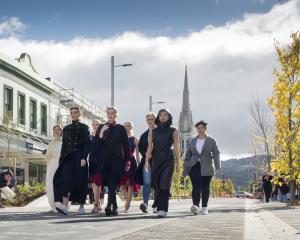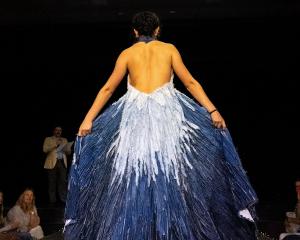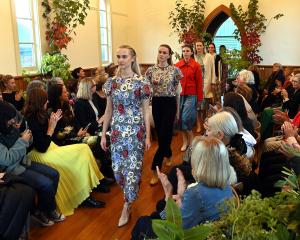International model turned financier turned young designer advocate Stefan Siegel is the man behind leading fashion website Not Just a Label. Rebecca Fox talks to the iD Emerging Designer judge about the future of fashion.
Stefan Siegel believes it is time to look at alternative models for fashion, that like the "slow food'' movement, where people have started to question where their food is coming from and its quality, the same is slowly happening in fashion.
High street fashion - the main shopping centres and malls home to chain stores - and even the luxury market meant there was little uniqueness to fashion today, he said.
"Customers know whatever they purchase in Auckland you can purchase in Fifth Avenue. The world is so connected, it is so easy to spot that offering is not that exciting.''
Also, the established process of using public relations and celebrity endorsements or gifting to drive a business forward were not valid any more, he said.
It was reaction to the mass market that opened Mr Siegel's eyes to the gap in the market for young designers to successfully showcase their work.
"There was only a few making it. Many, after four or five years, folded.''
He and his brother Daniel started up Not Just a Label (NJAL) in 2008 on a shoestring to create a network and assist young designers as they left design schools to establish themselves.
It now features 20,000 designers from 120 countries.
"It gives young designers a platform to showcase themselves freely.''
NJAL's products are not stuck in a storage facility or on a factory floor. Instead, people buy directly from the independent designer's studio.
Its website says "The NJAL shop puts the power - and the profits - back into the hands of young designers''.
Mr Siegel grew up in the German-speaking part of the Triveneto region of northern Italy, which was also an area responsible for 40% of high-end and luxury manufacturing in the country.
It was while studying economics in Vienna that he started modelling for top design houses such as Prada and Gucci.
He was able use this experience, his master's in international business administration and economics and his work for investment bankers such as Ernst and Young and Merrill Lynch, where he advised publicly listed fashion houses, to launch the company.
The idea was to enable designers to directly communicate with their customers. Seventy percent of the return from sales goes to the designers and 30% to NJAL.
As the company got bigger, it organised educational events and trade shows and collaborated with more traditional fashion organisations.
Last year it also took the step of opening bricks and mortar stores in Dubai, Berlin and, in December, New York.
In each of those places they worked with governments, city managements and organisations to ensure their costs were negligible.
"We only open a store at a location if it's free. We do not pay rent, as we do not want to penalise the designer.''
In New York, the costs were 95% met by the city of New York, while in Dubai it did a 50:50 relationship with the designers. "It's a solution that truly supports the designer.''
To be successful in today's global world, businesses needed to be successful both online and in bricks and mortar retail, he believed.
"You have to play both games really well.''
It was not enough to open a store with the "same old garments'' any more and the same was happening online.
"There is a lot of shops consolidating online. It's becoming more important to have different offerings.''
Online was not the only answer because it was expensive to run as well, due to the need to store goods and have the infrastructure needed for sending them out.
However, the situation did offer young designers a big opportunity to go out and directly contact the consumer.
The days of a designer also having a business manager, a product manager and a supply chain manager were ending.
"The most successful designers are one-woman or one-man shows. They are perfectly capable at doing it all and will definitely prevail over the next couple of years.''
New Zealand designers need not think they were isolated, he said.
"The world is one place. It does not matter where you are as long as there is an airport and a functioning internet connection.''
Once upon a time young designers hotfooted it to the design capitals of the world to make their mark but now it was the "opposite'', with designers working in Detroit, Shanghai, Dubai.
While he now had a group of "talent scouts'' that travelled looking for designers, he liked to do certain trips himself to foster relationships with different countries.
For young New Zealand designers to be successful, they needed to take advantage of their uniqueness: "the textiles that can only be found in New Zealand, the production methods that can only be found in New Zealand; what is unique and not replicable elsewhere.''
Most of their designers making a mark had a strong regional identity and had not been living in Paris.
A few New Zealand designers were signed with him and they were doing quite well, he said.
Fifteen New Zealand designers, including Dunedin's NOM*d, are listed on NJAL's Black Sheep platform, designers selected by its scouting team as being especially "innovative, pioneering and striking''.
They also include Auckland's Stolen Girlfriend Club, jeweller Medowlark and Kathryn Wilson footwear and Wellington's Kowtow and Jarrod Reid.
It will be Mr Siegel's second trip to New Zealand. He first visited last year for the World of Wearable Art and fitted in a skiing trip to Otago's lakes district.
"I'm from the Alps, a mountain guy.''
He remembers from his school days being told the only other place in the world with vegetation and climate similar to those of his home in northern Italy was southern New Zealand.
"I felt quite at home in the South Island.''
To see
• Emerging Designers, March 17, Dunedin Town Hall
• Stefan Siegel public talk, Dunedin Public Art Gallery auditorium, March 17, 3pm












